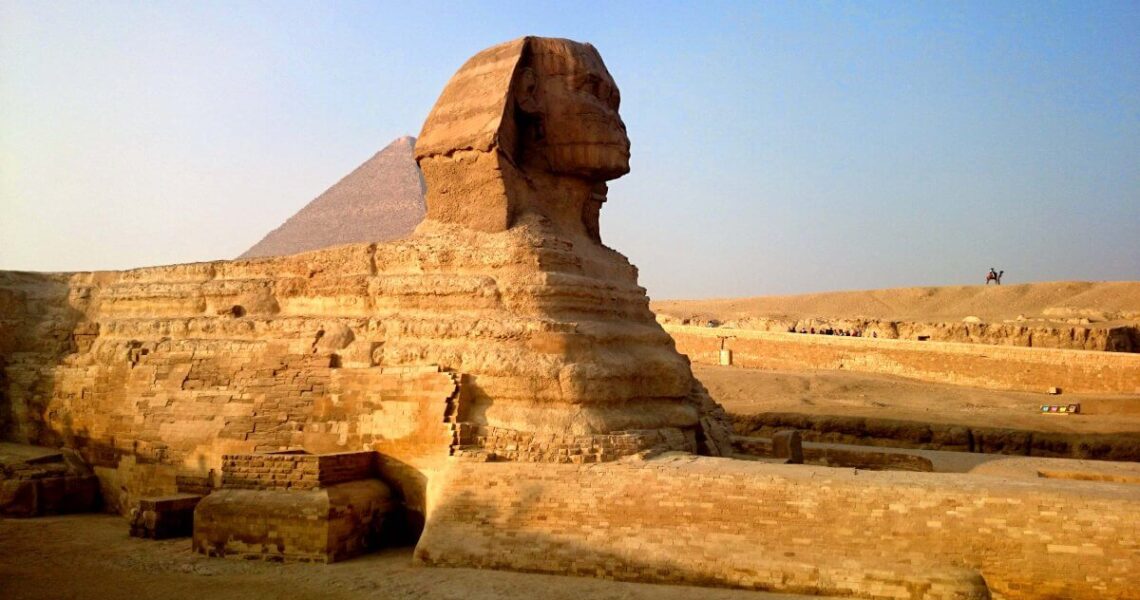Egyptian Pyramids- The science behind them:
We have Hollywood to thank—and perhaps also Asterix—for the classic image of the construction of the Egyptian pyramids: a legion of slaves breaking their backs to drag impossibly huge rock blocks under the lash of a whip. Archaeological investigations have dismantled some of the myths surrounding the construction of the Great Pyramid of Cheops, and nowadays they have been joined by the empirical sciences, with several experiments that are testing some methods that may have been used by the builders of the mysterious pyramids.
Not much is known about the reign of Pharaoh Cheops or Khufu, who reigned in the Ancient Egyptian Empire in the twentieth-sixth century BC, but he is universally known for bequeathing to the world the only one of the Seven Wonders of the Ancient World that has lasted, the highest and most massive of the Egyptian pyramids, which rises to 138 metres.
The Great Pyramid of Giza—also known as the Pyramid of Cheops—has been studied for centuries. The colossal scale of the monument has inspired innumerable theories about the methods used in the carving of the blocks, their movement and their final placement. Today it is known that the granite used in parts of the interior came from a quarry in Aswan, more than 800 kilometres away, and that it was transported by ships on the Nile, while the limestone blocks that make up most of the structure, as well as the former casing stones, were extracted from quarries near the site.
INTERACTIVE TIMELINE: THE SCIENTIFIC STUDY OF THE PYRAMIDS OF EGYPT
In recent years, several discoveries have come to clarify some details about the making of the Great Pyramid. During the excavations of a former Red Sea port in 2013, the French Egyptologist Pierre Tallet found some papyri that included the diary of Merer, one of the supervisors of the construction of the pyramid. In 2014, the American archaeologist Mark Lehner, head of the Ancient Egypt research association (AERA), discovered next to the pyramids the ruins of a port that served to transport materials along canals in the Nile. The discoveries in the associated settlement confirmed that the workers were not slaves, but skilled and well-fed workers.
WET SAND TO REDUCE THE FRICTION
Once the blocks of stone arrived at the port of Giza, they had to be brought to the site and placed in position, all without wheels or pulleys, which were not used. This is where experimental science has provided some useful clues. When transporting a sled with a heavy load, wetting the sand to just the right degree will reduce the friction and therefore the effort, as demonstrated in 2015 by a team of physicists led by Daniel Bonn of the University of Amsterdam.
It was the ancient Egyptians themselves who provided Bonn with the key clue: a painting on the tomb of Djehutihotep from 1900 BC shows a group of men dragging a statue on a sled, while in front another person pours water on the sand. Where the Egyptologists saw a ceremonial gesture, Bonn saw a practical solution. His experiments show that the right quantity of water, between 2 and 5% of the volume of the sand, forms capillary bridges between the grains that reduce the coefficient of friction.
Great Pyramid
But the moving of the stone blocks. Was not the only big obstacle that the builders of the Great Pyramid had to face. It was also necessary to raise the blocks to their final resting place. According to what Egyptologist Peter Der Manuelian, director of the Semitic Museum of Harvard. “Scholars mostly agree on a system of ramps for hauling up the blocks; the directions, angles, materials are still problematic and there are always. New (and often crazy) theories.” Lehner has proposed a spiral ramp supported on the pyramid. Like a road that ascends a mountain, while the French architect Jean-Pierre Houdin has developed. A model also with a spiral ramp, but one which travels through the interior the structure.
Perhaps the new physical investigations of the structure of the Great Pyramid can reveal more clues about this question. In 2017, the use of muography, a technique similar to radiography. Allowed the international project scan pyramids to detect a possible unknown cavity. According to Egyptologist Kate Spence of the University of Cambridge. The position and inclination of the cavity suggest that it could be a ramp used during production.
CYLINDRICAL STRUCTURES TO MOVE THE BLOCKS
Whatever the design of the ramps, overcoming the slopes with such heavy loads must have been an arduous task. Although perhaps it would be somewhat less if the Egyptians used the system. Described in 2014 by the physicist Joseph West at Indiana State University (USA). Other experts had proposed the possible. Use of cylindrical wooden structures that allowed the blocks to be rolled, but West’s proposal. Born from a project for his students, is notably simpler. It consists of tying three wooden posts to each side of the block. Turning its square section into a 12-sided polygon. In this way, even a single person can roll a heavy block.
One major project that is underway is the one promoted by the Ward family of Leeds (United Kingdom). Founded in 2008, Earth pyramid aims to build, by 2025, in a place yet to be determined. A pyramid 50 metres high that will serve as a time capsule for 1,000 years. And whose construction will permit the testing of experimental systems, such as Houdin’s ramp and West’s dodecagon. Perhaps the answer to the mysteries of the past will be found in the science of today.
In few of our previous articles we gave an account on ancient aliens. According to certain researches, previously these ancient aliens came and taught the primal men the new technologies. You can give it a read.
